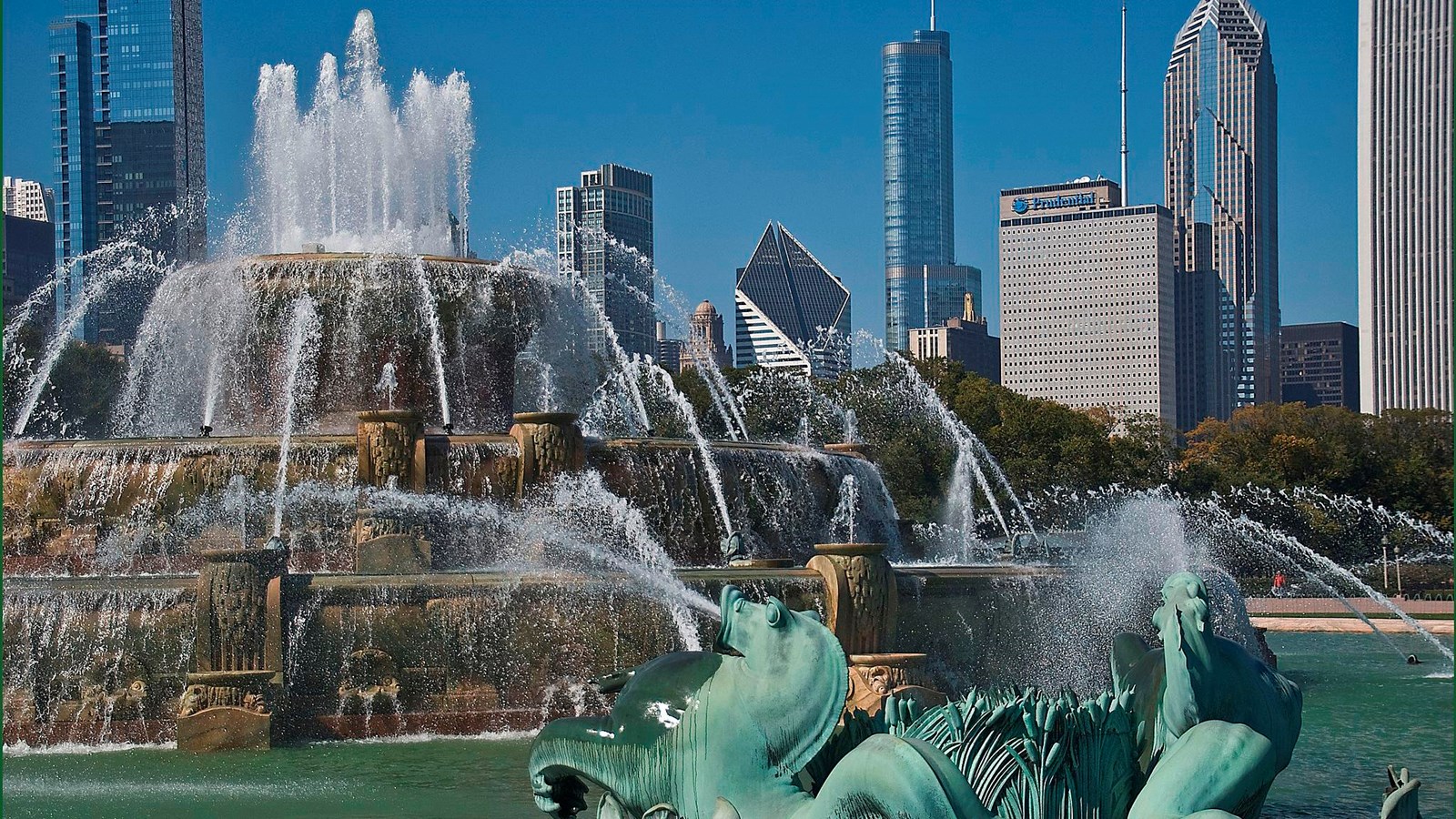Last updated: June 6, 2022
Place
Illinois: Grant Park

Ron Cogswell, CC BY 2.0
Route 66 tends to evoke images of open, western landscapes like Monument Valley, but the road is also urban. Nowhere is it more so than in downtown Chicago, where the quintessential American corridor begins, or ends, depending on your perspective, at Grant Park. At the intersection of Jackson and Michigan Avenues is the “End Historic Route 66” sign. Many vintage icons from the Route 66 era have been lost, but not Grant Park, the historic road’s official eastern terminus.
Located in close proximity to Lake Michigan, Grant Park is one of the oldest parks in the city and had its beginnings in the 1830s, but the 1893 World Exposition was a catalyst for its historic significance. Chicago spent $27 million hosting the landmark event. Running from May to October of 1893, the fair covered 633 acres and attracted numbers equal to nearly half of the United States population. The fair introduced several firsts, including Cracker Jacks, Aunt Jemima syrup, diet soda, and Pabst beer. It also introduced the idea of making Grant Park a major civic and cultural landmark.
In all, Grant Park lived up to its promise as Chicago’s cultural and civic center. Grand promenades, groomed lawns, and numerous bridges and fountains, along with modern installations of art and three major historic cultural institutions for the public--the Art Institute, the Shedd Aquarium, and the Field Museum of Natural History--all distinguish the park. Statues of Christopher Columbus, Abraham Lincoln, Ulysses S Grant, and various other equestrian sculptures provide visual focus for various areas. Built in 1927, the Clarence Buckingham Memorial Fountain is a monumental focal point. The park hosts public appearances of famous people, special events, and festivals and serves as a neighborhood park used for baseball games, ice skating, tennis, walking, jogging, and other amusements.
Pairing Grant Park with Route 66, the major east-west automobile artery, was a natural choice. Before the advent of Route 66, the popular Pontiac Trail already connected Chicago to St. Louis. In 1918, Illinois began paving the road. By the time Route 66 came along, the entire Pontiac Trail had pavement. By 1927, when Louis Armstrong and the accompanying King Oliver’s Creole Jazz Band, ushered in the Jazz Age in Chicago, Route 66 signs were visible all along the Illinois route. Chicago sported numerous services to accommodate travelers, including its parkland gem, Grant Park. The National Park Service acknowledged Grant Park’s significance in its 1993 National Register of Historic Places listing.
Grant Park’s street address is 337 East Randolph St. in Chicago, IL. The park is bounded on the north by Randolph Dr. and the Chicago River, on the east by Lake Michigan, on the south by McFetridge Dr., and on the west by Michigan Ave.
For more information visit the Chicago Park District Grant Park website.
See the Art Institute of Chicago website for information about visiting.
See the Shedd Aquarium website for information about visiting.
See the Field Museum website for information on visiting.
Find the Grant Park National Register nomination form.
